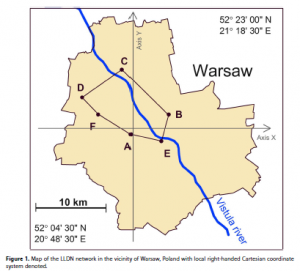Journal of Geophysical Research: Atmospheres
Volume 120, Issue 1, pages 63–72, 16 January 2015
DOI 10.1002/2014JD022289
Zenon Nieckarz 1* , Piotr Baranski 2, Janusz Mlynarczyk 3, Andrzej Kulak 3,4 and Jan Wiszniowski 2
1) Experimental Computer Physics Department, Institute of Physics, Jagiellonian University, Kraków, Poland
2) Institute of Geophysics, Polish Academy of Sciences, Warsaw, Poland
3) Department of Electronics, AGH University of Science and Technology, Kraków, Poland
4) Astronomical Observatory, Jagiellonian University, Kraków, Poland
Download
http://onlinelibrary.wiley.com/doi/10.1002/2014JD022289/abstract
Abstract
We compare the results of two methods of calculation of the charge moment change (CMC, also called the dipole moment change) of the cloud-to-ground lightning discharges. The first method uses multistation ground-based measurements of the E field change for the purpose of the lightning flash location and charge analysis. Our six stations, called the Local Lightning Detection Network (LLDN), were set up in the Warsaw region. The second method is based on measurements of the horizontal magnetic field component of electromagnetic waves generated by atmospheric discharges in the ELF (extremely low frequency) range. Our ELF station is equipped with two magnetic antennas, east-west and north-south and is located in a sparsely populated area of the Bieszczady Mountains in Poland (49.19°N, 22.55°E). We present and discuss the results obtained by both methods, focusing on the negative return stroke (RS) and the return stroke with continuing current (RS and CC) lightning discharges. Results show a good correlation between the CMC obtained by the two methods. For the negative RS and CC and RS the correlation coefficient is equal to +0.50 and +0.80, respectively.
